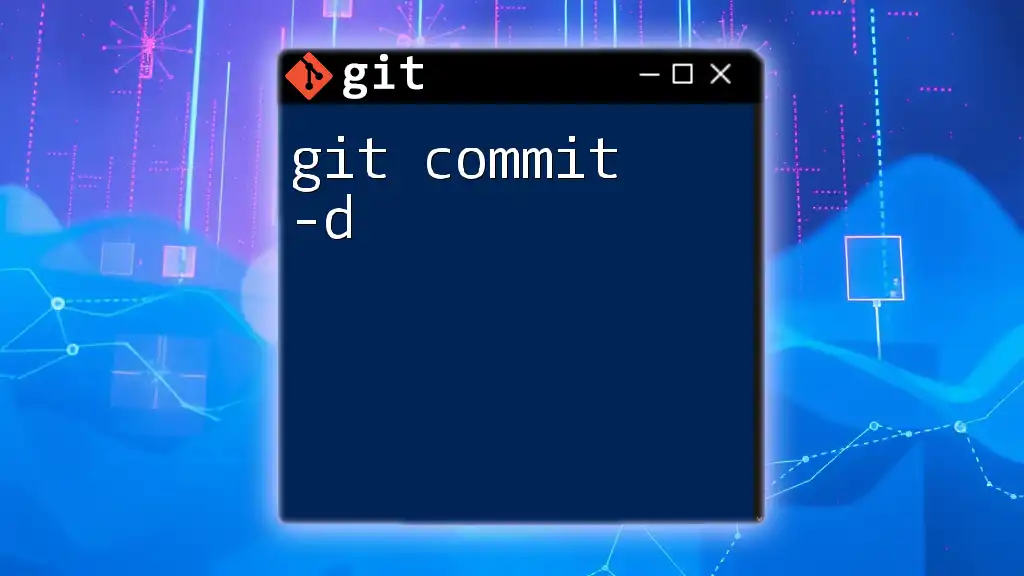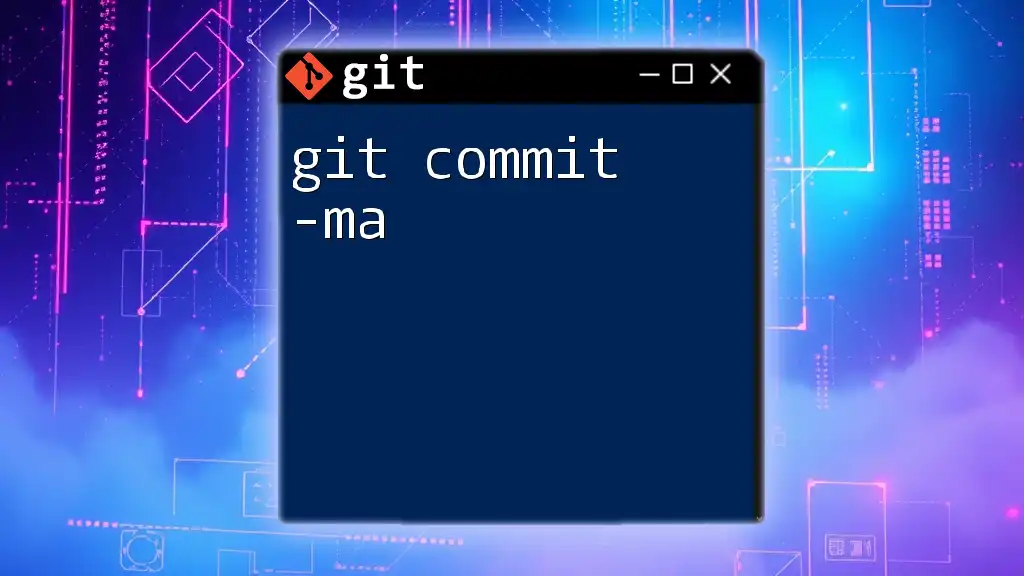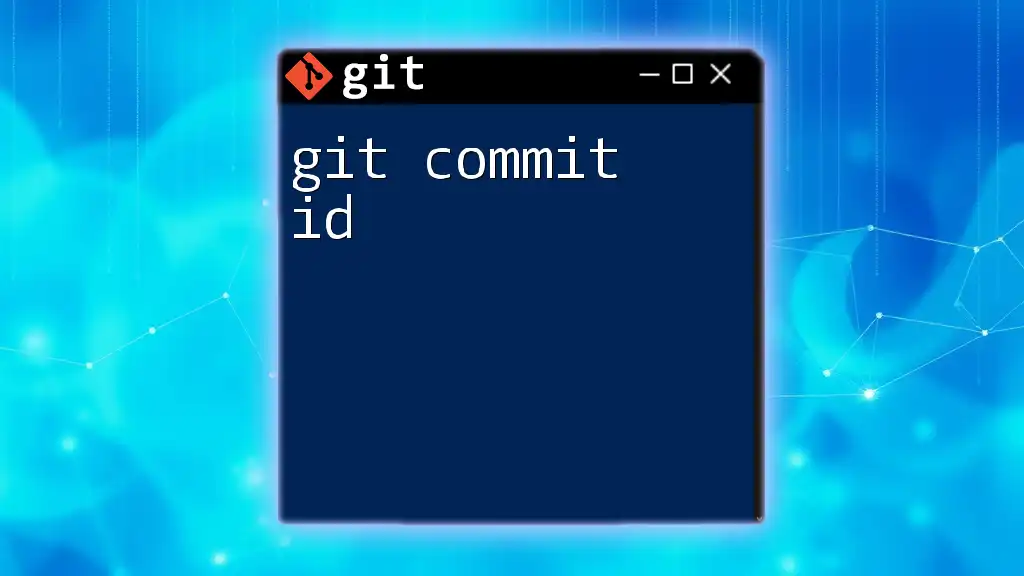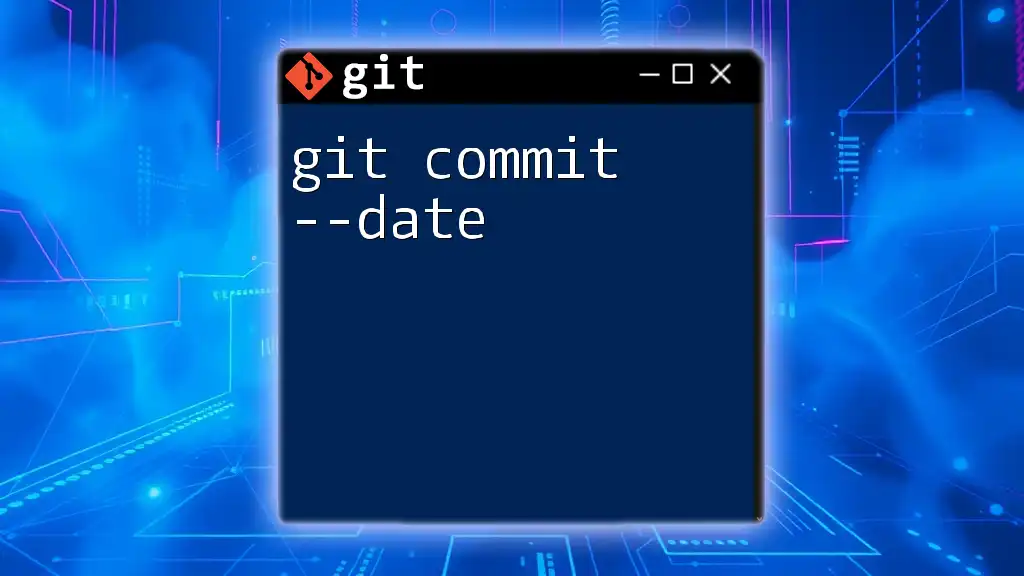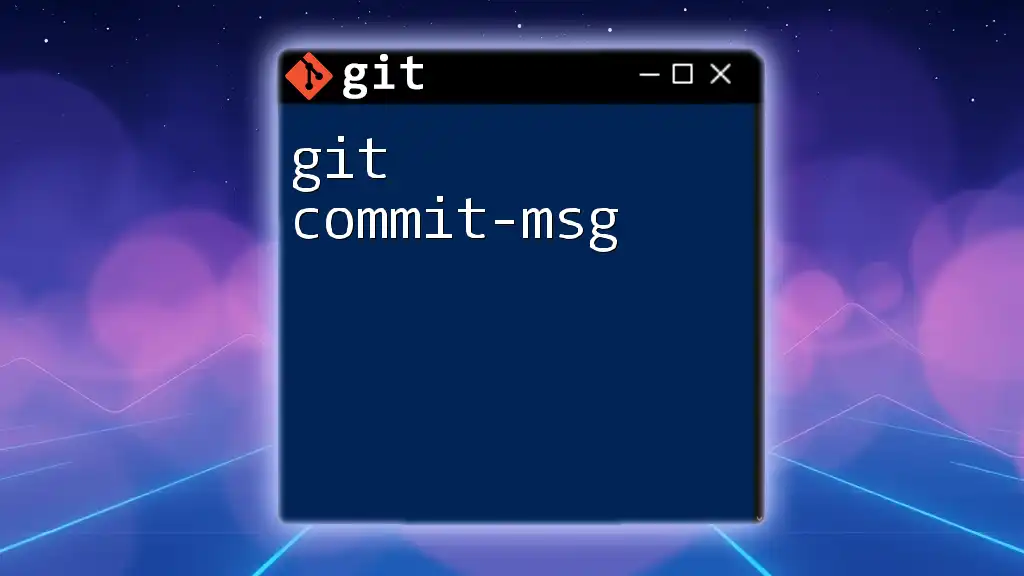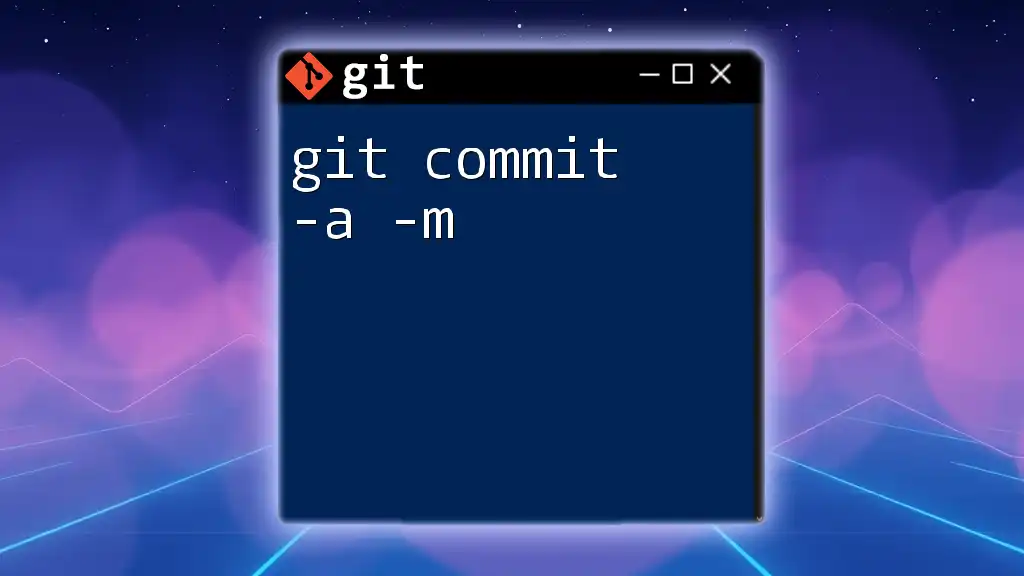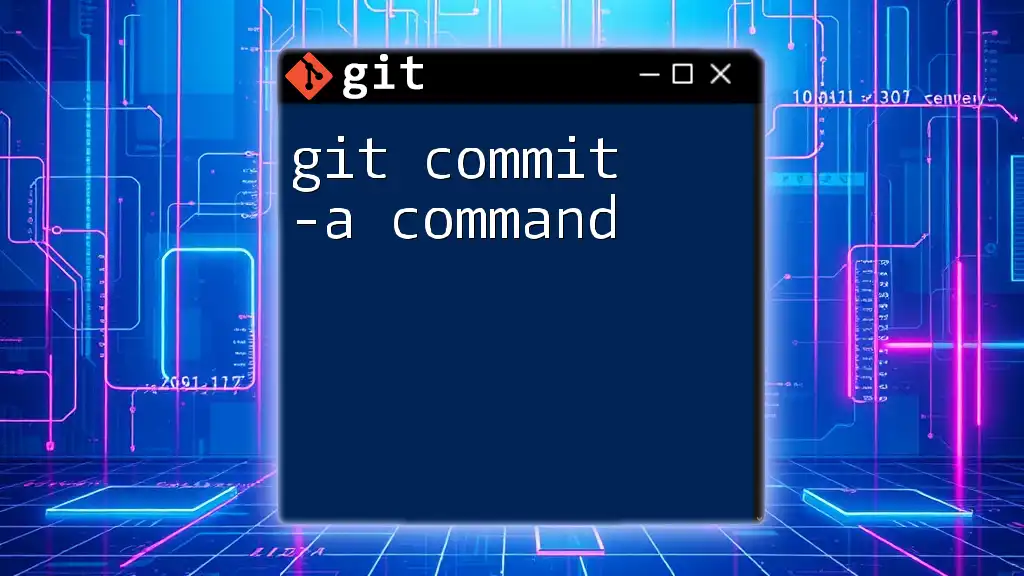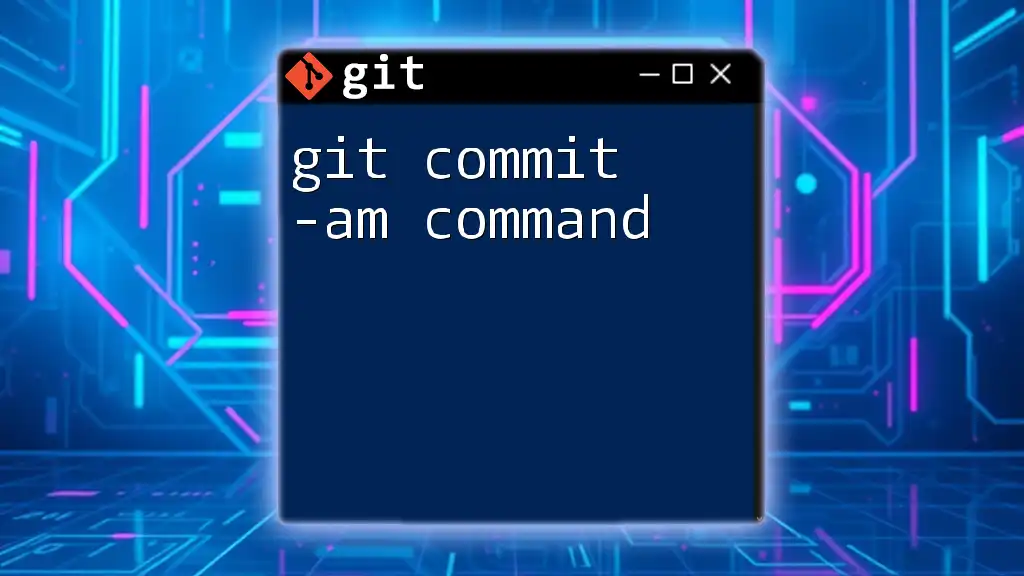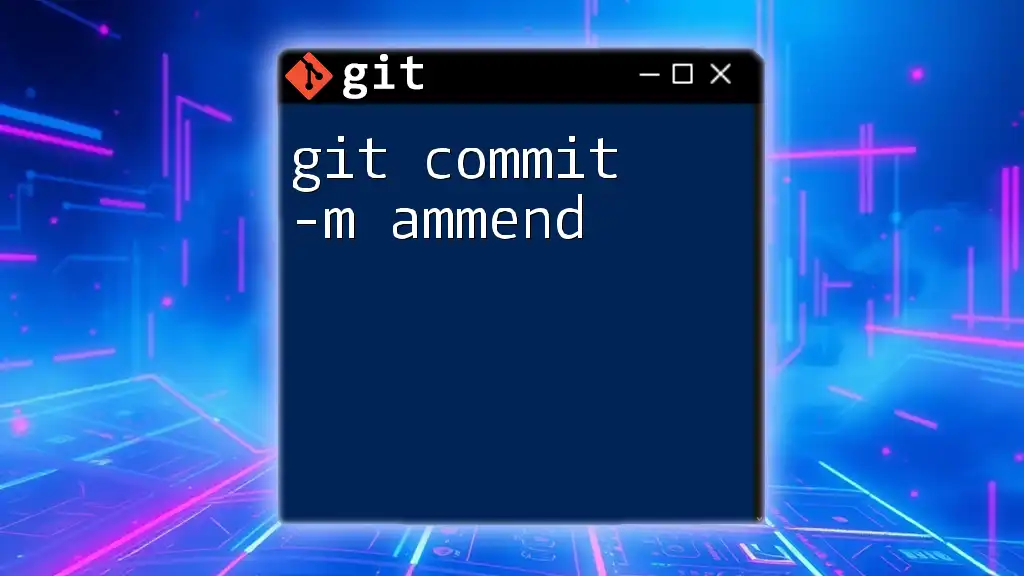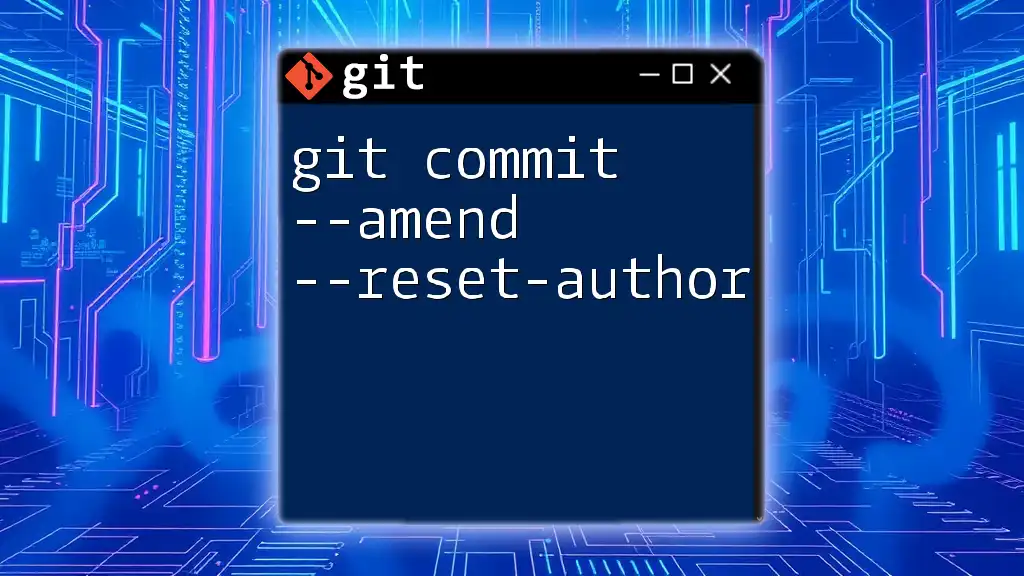The `git commit -d` command is used to create a new commit with a message, where the `-d` flag allows you to edit the commit message in the default text editor before finalizing it.
git commit -d
What is Git?
Git is a powerful version control system that enables developers to track changes in their codebase, collaborate on projects with multiple team members, and maintain a history of every modification made over time. Given its importance in contemporary software development, understanding how to effectively use Git commands is crucial for both beginners and experienced developers.
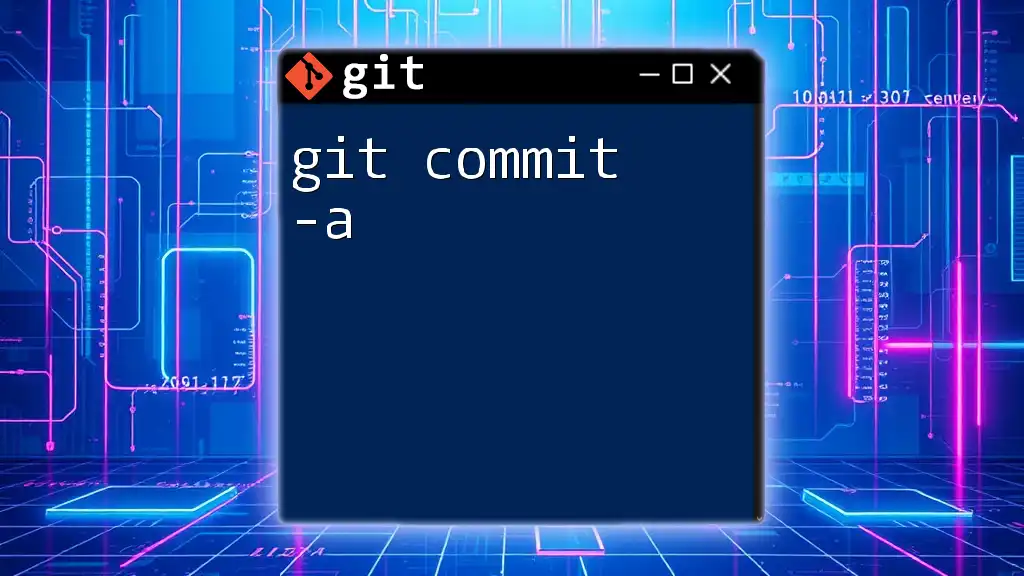
Introduction to `git commit`
At the heart of Git's functionality lies the `git commit` command. This command is used to save changes to the local repository. Committing code creates a snapshot of the current state of the project, allowing developers to revisit or revert to that state later. Each commit is accompanied by a message, which documents what changes were made and why—a practice that greatly aids collaboration and project management.
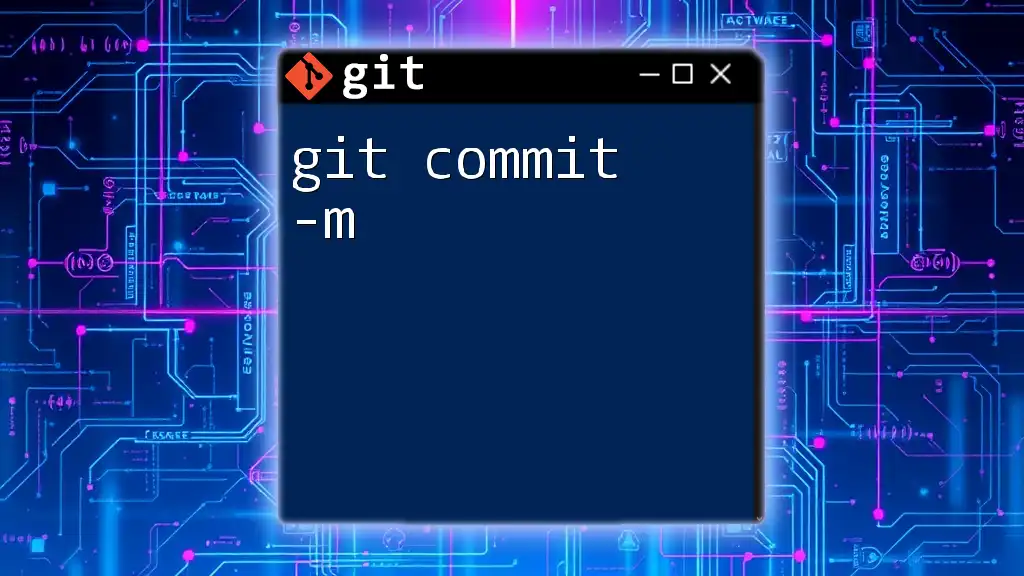
Overview of `-d` Flag
The `-d` flag often causes confusion among developers. When dealing with commits, the `-d` flag signifies deleting the commit message, allowing for changes to be made to previous commit messages or altering the commit history temporarily. Understanding how to harness this can be invaluable when refining project documentation and ensuring clarity in commit logs.
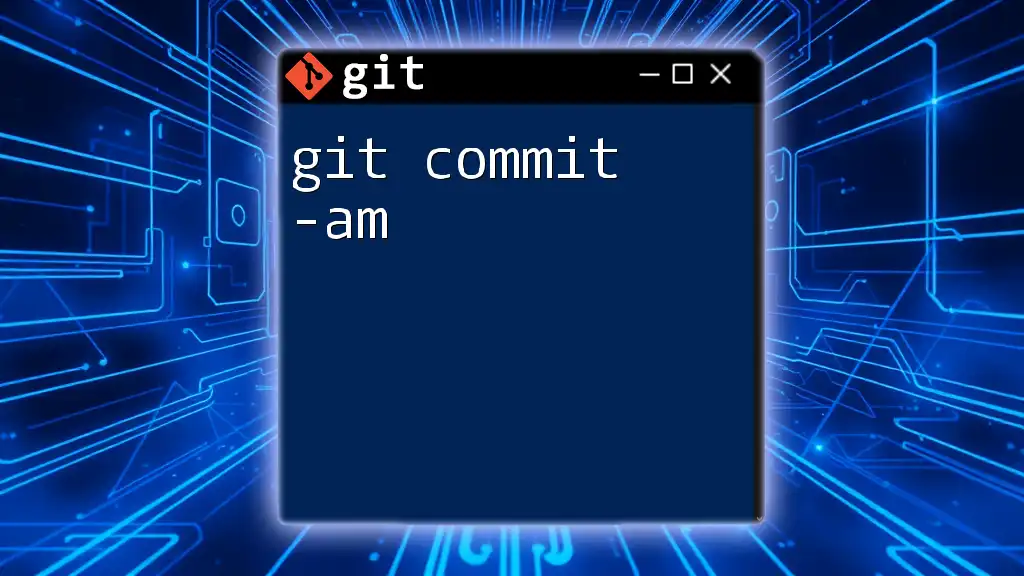
The Meaning and Usage of `git commit -d`
What Does `-d` Stand For?
In the context of `git commit`, the `-d` flag stands for delete in a broader sense, although it is more nuanced in function. It is invoked when amending a commit, allowing developers to modify a commit message without altering the actual state of the files committed. This is particularly valuable for correcting mistakes or refining messages to better articulate the changes being recorded.
Syntax of `git commit -d`
The basic structure of the command looks like this:
git commit -d <options> -m "<commit message>"
This structure highlights that the command can take additional options alongside the `-d` flag, allowing for flexibility and specificity in its application.
When to Use `git commit -d`
Situations Suitable for Using `-d`
There are several scenarios in which the `-d` flag becomes particularly useful:
- When you need to change an erroneous commit message.
- If you are in the process of amending a commit and wish to enhance clarity or correct a mistake.
- When working on a feature branch and refining your commit history before merging into a main branch.
Understanding these scenarios empowers developers to use `git commit -d` effectively in their workflows.
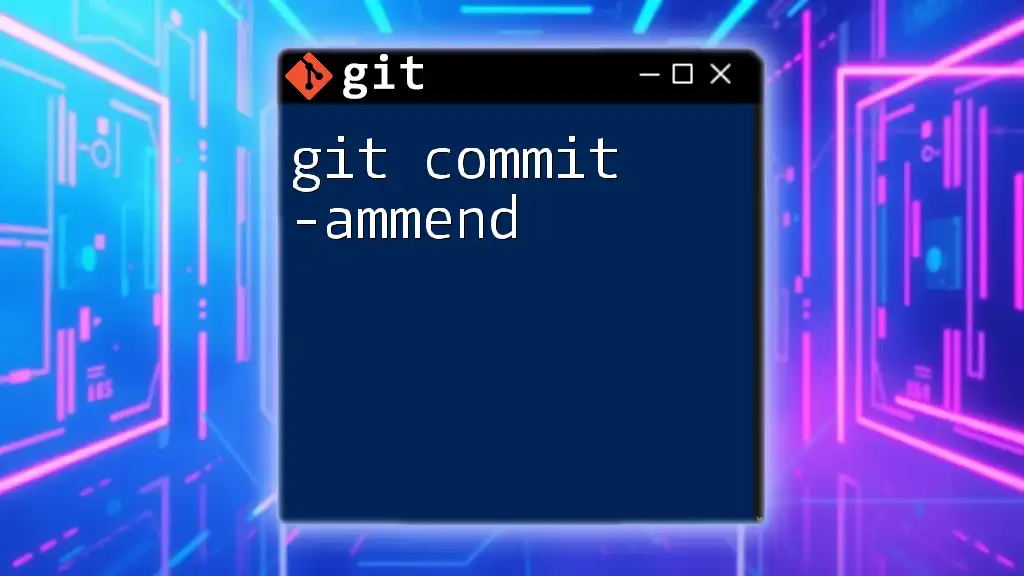
Practical Examples
Basic Example of `git commit -d`
Using `git commit -d` can be straightforward. Here’s an example of updating a commit message:
git commit -d -m "Updated README with installation instructions"
In the above command, you are making a commit after modifications to the README file and using the `-d` flag to indicate there's a change to the commit message—here specifically clarifying what was done for future reference.
Advanced Example: Amending Commits
Sometimes you might realize that your last commit message isn't entirely correct or clear. Using `-d` with the amend option allows you to alter this as needed:
git commit --amend -d -m "Updated the title of the project"
This command opens the possibility to change the last commit message without creating a new commit, effectively modifying the previous one in your project's history.
Rewording Previous Commits
Another powerful capability of `git commit -d` is rewording older commit messages. If you want to revisit and correct a particular commit message within your history, the following command is used:
git commit -d -m "Corrected error in commit message"
This approach can clarify the history of a project, making it easier for those who read the commits later (including your future self!).
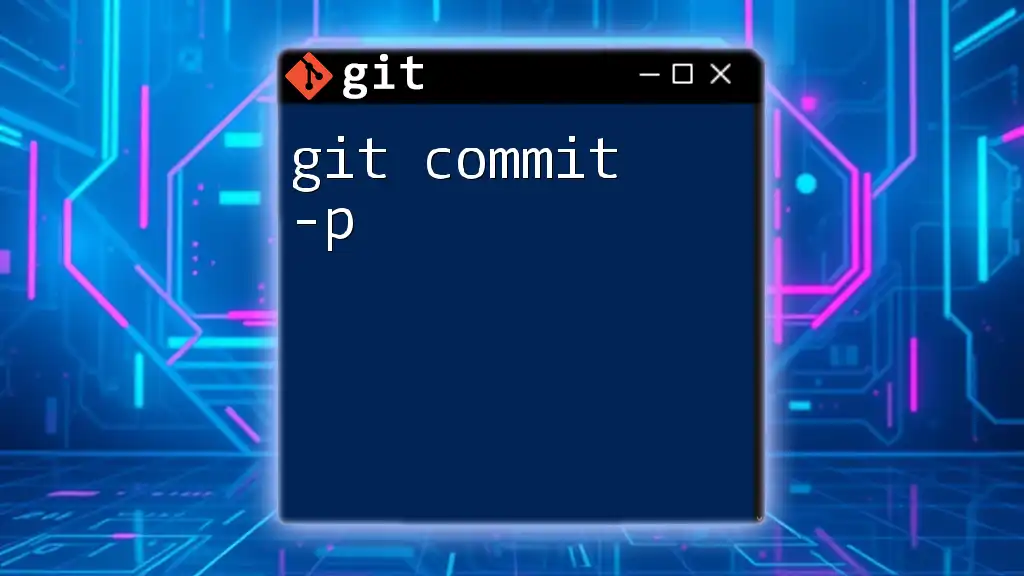
Best Practices
Consistency in Commit Messages
When using `git commit -d`, always strive for clarity and consistency in your commit messages. A clear message provides context both for your own future reference and for colleagues who may review the project later.
A few tips for writing effective commit messages include:
- Start with a short summary of the changes (50 characters or less).
- Use the imperative mood (e.g., "Fix bug" rather than "Fixed bug").
- Be specific about what was changed and why.
When Not to Use `-d`
While the `-d` flag can be a useful tool, there are scenarios where it may not be appropriate:
- Avoid using `-d` if you are collaborating on a shared repository, as altering commit history can potentially confuse your team.
- Refrain from forcefully deleting or amending commits without considering the ramifications, specifically if those commits have already been pushed to a remote repository.
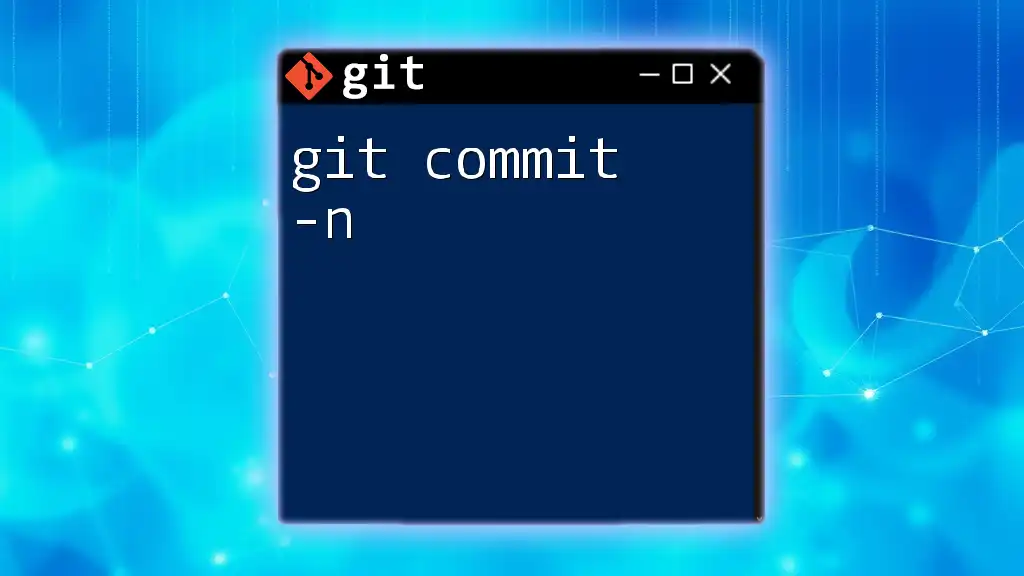
Troubleshooting Common Issues
Common Errors with `git commit -d`
There are some common pitfalls to watch for when using `git commit -d`. Users may encounter errors such as:
- Uncommitted changes error if there are changes in your working directory that haven’t been staged yet.
- Access denied error if directory permissions are not correctly configured.
Understanding these common issues is the first step toward effectively using the command.
Best Tools for Error Checking
Using Git GUI tools can alleviate many issues associated with command-line usage. Here are some recommended tools:
- GitKraken
- Sourcetree
- GitHub Desktop
These graphical interfaces can help visualize changes, making it easier to commit or amend commits without running into common command-line errors.
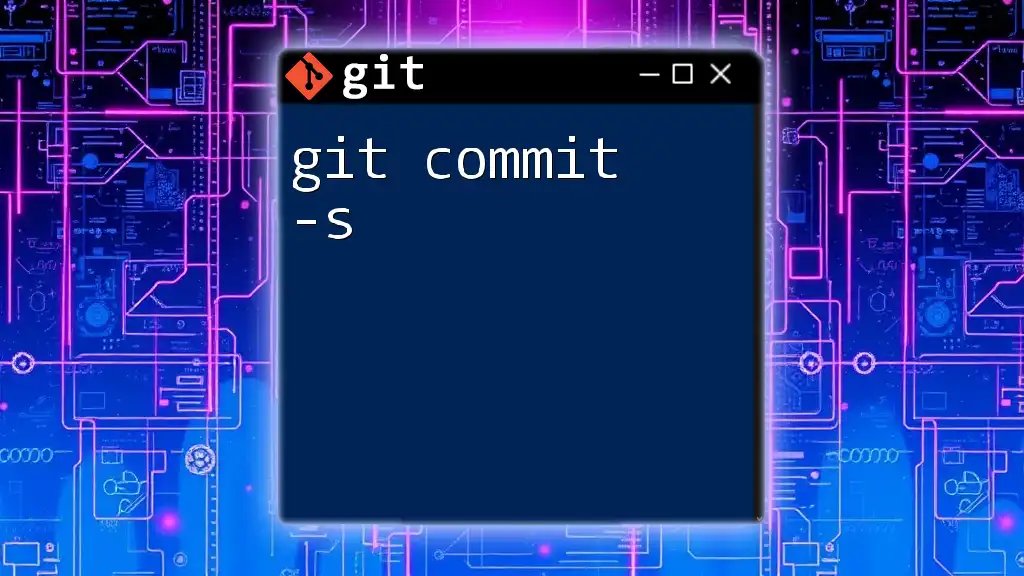
Conclusion
In summary, the `git commit -d` command is a powerful tool within Git that allows for more precise management of commit messages, enabling developers to provide clear and informative documentation of their code changes. By understanding when and how to use this command, as well as adhering to best practices, you can enhance both your workflow and your project's overall clarity.
For those looking to deepen their understanding of Git, numerous resources are available, including official documentation and community forums where you can engage with fellow developers. Practice using `git commit -d`, and embrace the power of effective version control in your projects.

